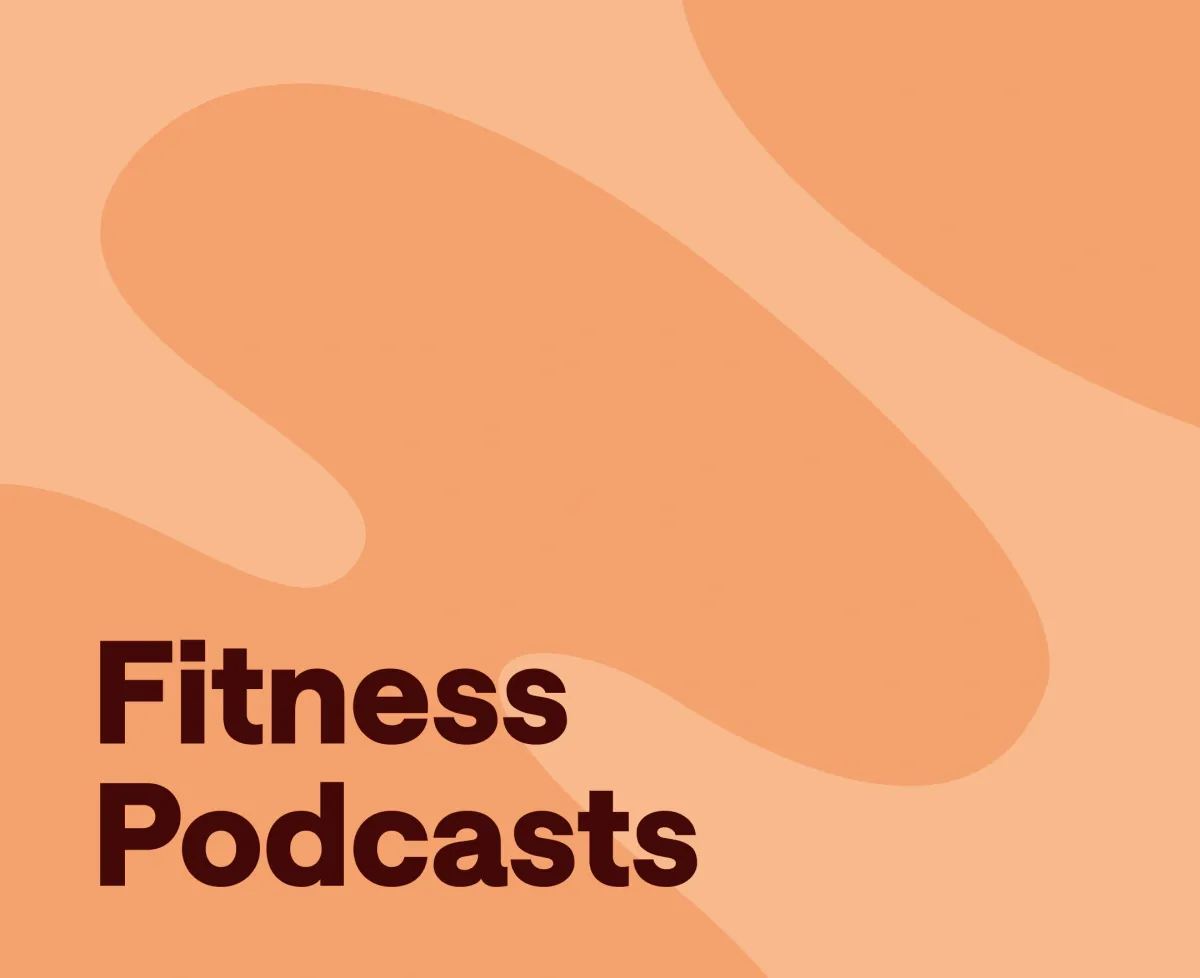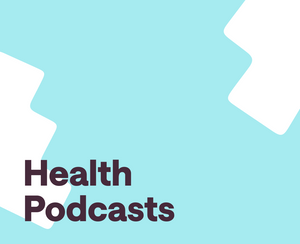A healthy mind in a healthy body!
Being physically active can help manage weight, improve your brain health, reduce the risk of disease, motivate you to do your everyday activities, and strengthen bones and muscles. Getting fit is more than just exercising, eating healthy food, drinking water, and having a good sleep. The essential part of staying in shape is consistency. Motivation and discipline are the key factors to starting your healthy life.
Here we've assembled 25 of the best fitness podcasts to help inspire you on your journey to better fitness.
1. Mind Pump
Mind Pump is the most popular fitness podcast that makes science educational and entertaining. The hosts are three former personal trainers with years of experience who discuss health, fitness, nutrition, and more. This podcast sorts the truth from fake science. Finally, you can make sense of the confusing and contradictory fitness advice often given to you. Mind Pump delivers "raw fitness truth, " which is precisely what you need. The episodes come out almost every day and last for 50 minutes, so you can deep dive into each topic.
2. Ben Greenfield Fitness
The host of this podcast Ben Greenfield is rewarded personal trainer and successful author, and he really knows all the stuff when it comes to health, fitness, and nutrition. Each episode provides a well-organized breakdown of fitness topics, from muscle gain to recovery and more. By listening to this podcast, you will have the latest news, tips, and trends from experts. The episodes come out every Thursday and Saturday and last for 1 and 30 hours.
3. Found My Fitness with Rhonda Patrick
If you want to deep dive into what is going on with your body when you exercise, this podcast is for you. The host is a Ph.D. holder, Rhonda Patrick, who is so knowledgeable that you will learn a lot from each episode. Have you ever thought you would be interested in amino acids and mitochondria? With this podcast, you will find these and other topics very interesting and helpful for your health and body fit. She Deep dives into such topics as fitness as a depression treatment, wellness during pregnancy, etc. You can listen to her solo episodes and interviews with various specialists. So, don't miss your chance.
4. Another Mother Runner
Running is one of the most valuable activities for your body and mind. So, this podcast is for you if you are a runner and a parent. The host Sarah Bowen is a mother of three and is a marathon runner, so she knows how to manage running during your busy life. This podcast aims to motivate runners of all levels. Frequently Sarah is joined by a new co-host each week and provides real insights on everything concerning running, from mental toughness to nutrition and more. Listening to this podcast, you will get motivated and understand the struggle of managing your free time for running. You can tune in twice a week and listen to this podcast during your run.
5. 20 Minute Fitness Podcast
This podcast will be your best fitness and health podcast if you are a super busy person. During each episode, you will go through various topics with an industry expert in just 20 minutes. The episodes cover subjects like exercise burnout, nutrition, and fitness trends. This podcast is always up to date on the latest science. It analyzes the latest trends debunking health myths, and lets you know what you really need. You can have the new episodes every Thursday.
6. Hurdle
Are you in a fight with yourself and can't make yourself go and start exercising? This fitness podcast is right for you. Hurdle will get you through all rough patches where motivation is a struggle that should be mustered up. Whether you’re a starter in fitness or a top athlete, you will have such moments where you want to give up. The host of this podcast Emily Abbate is joined by various inspiring guests, experts, professional athletes, entrepreneurs, and more, who will inspire and push you forward. They bring out all the most significant hurdles they experienced and discuss how they overcame them. This show comes out three times a week, so you will always keep motivated for your health and fitness.
7. Joe DeFranco’s Industrial Strength
Joe DeFranco’s Industrial Strength is one of the most powerful fitness podcasts dedicated to improving one's speed, mobility, strength, agility, and sport-specific endurance. Many global athletes have hired Joe for their fitness journeys and constantly listen to his content. Though the target audience of this podcast is gym owners and trainers, anyone who wishes to learn and enhance his fitness skills can join. The host Joe DeFranco has been included on various platforms like Spike TV, NFL Network, ESPN, Men’s Health Magazine, and more.
8. The Fat-Burning Man Show
Another award-winning podcast ranked in the Apple iTunes Podcast Awards and Huffington Post is The Fat Man Burning Show. The fat man is the host Abel James, a best-selling author in New York Times and ABC TV celebrity coach. If you want to try the Wild Diet, you should undoubtedly tune in to this podcast. This podcast exposes misinformation, marketing myths, and other fake news. The host, Abel James, provides science-based, practical methods for achieving desired health and fitness goals. He recommends everything he has experienced and shares it with everyone on their health and fitness journey. James became fit and healthy from being fat and sick with the help of the Wild Diet, and he is sure everyone can achieve this.
9. The Model Health Show
Elevate your well-being with Shawn's insightful discussions on nutrition, fitness, and mindset. Backed by scientific research, this podcast delivers practical tips for optimizing health, fitness, and performance, making it a must-listen for those seeking a holistic approach to their well-being.
10. The Dumbbells
Comedy meets fitness in this hilarious podcast where comedians and celebrities share their health and fitness journeys. With a light-hearted approach, Eugene and Ryan discuss goals, setbacks, and successes, making it an entertaining and relatable listen for anyone navigating the ups and downs of fitness.
11. Fun and Gains
Brittany Lupton is a personal trainer who helps support those looking to improve their health and fitness and find joy along the way! She shares her training guides through various channels, but this weekly podcast gives you a mix of 30 and 60 minute shows that dive deep into specific exercises, diets and tips on improving your progress. Episodes include how to stay healthy on vacation, how to build confidence at the gym and *hot takes* on fitness.
12. Unf*ck Your Fitness
Do you ever feel like every new diet you try ends in failure? Or every new fitness regime fizzles out after a few weeks? Kristy Castillo knows jusssssst how you feel and her podcast is here to un*fuck your fitness regime! Toss the fads in the garbage and get real with a program that will help you be proud of the body you have and build the body you want.
13. The Rich Roll Podcast
Join ultra-endurance athlete Rich Roll as he explores the intersection of health, fitness, and spirituality. Featuring interviews with thought leaders, athletes, and experts, this podcast delves into holistic well-being, plant-based living, and the transformative power of adopting a conscious, purpose-driven lifestyle.
14. The Strength Running Podcast
Coach Jason Fitzgerald explores all things running, from training strategies to injury prevention. With expert interviews and practical tips, this podcast is a valuable resource for runners of all levels, aiming to enhance performance and overall well-being.
15. The Not So Fit Couple Podcast
Lucy David and Ben Haldon host this show that a covers a plethora of different topics including calorie counting, body positivity and biggest fitness f*ck-ups. Both personal trainers, Lucy and Ben practice what they preach, but also have been through the same ups and downs of dieting, workouts and mentality that you might be experiencing.
16. Arnold's Pump Club
GET TO DA PODCAST! If a daily podcast by 7-time Mr. Olympia, Hollywood Star and former Governor of California Arnold Schwarzenegger doesn't motivate you, what can?! Arnold gives 3 tips each day in a 10 minute podcast that you can easily fit into your morning routine. The tips include guidance on your diet, different exercises and studies into human behavior.
17. The Balanced Bites Podcast
Dive into the world of holistic health and balanced living with "The Balanced Bites Podcast." Nutritionists Diane Sanfilippo and Liz Wolfe engage in insightful conversations covering a spectrum of health topics tailored for women. From discussions on hormonal health and fertility to practical advice on maintaining a healthy lifestyle, this podcast serves as a valuable resource for women seeking a well-rounded approach to their well-being. Through their expertise and relatable discussions, Diane and Liz empower listeners with the knowledge and tools to make informed choices for their health journey.
18. The Train Happy Podcast
Hosted by Tally Rye, a personal trainer and author of the book "Train Happy". This podcast encourages listeners to have a positive and fulfilling relationship with fitness. Ditching the stress and pressure and adopting a positive mindset to encourage change.
19. Girls Gone WOD Podcast
For women who love functional fitness, the "Girls Gone WOD Podcast" is a dynamic exploration of the CrossFit world. Hosts Joy Parrish and Claire Koch share their personal experiences, challenges, and triumphs in the realm of fitness. The podcast fosters a sense of community by providing motivation, insights, and engaging interviews with inspiring women in the fitness industry. Tune in for an empowering blend of camaraderie and expert advice that celebrates the strength and resilience of women in the world of fitness.
20. Biohacking Bestie
Biohacking is an approach to fitness that employs a wide varitety of knowledge from different scientific fields to try and stimulate incremental improvements in health and fitness. This podcast, hosted by Aggie Lal, gives the best tips for those looking to live a full and fun life while also staying healthy and fit.
21. Get Lean Eat Clean
Get Lean Eat Clean is a podcast hosted by Brian Gryn, a personal trainer, golfer, internet entrepreneur, author, and health coach with a passion for helping others reach their optimal potential. The show provides expert knowledge on nutrition, training, and mindset to help listeners achieve their fitness goals.
Topics include how different doses of protein could affect your metabolic rate and when to use creatine supplements.
22. The Well Woman Podcast
The Well Woman Podcast is a dedicated space addressing the multifaceted aspects of women's health and wellness. Host Giovanna Rossi explores a diverse range of topics, from reproductive health to mental well-being. Through in-depth interviews with experts, the podcast aims to empower women with knowledge and insights, allowing them to prioritize their health and make informed choices. Join the conversations on this podcast to gain valuable perspectives and guidance on leading a balanced and healthy life as a woman.
23. Stompcast
Does the clanging and banging at the gym intimidate you? Are you not feeling up to high-intensity exercise but still want to feel healthier? Dr Alex George launched the Stompcast to help encourage people to walk more as a way of getting fitter without the pressure of getting swole like a bodybuilder. Each episode is split into relaxing, ambient segments with chat and background noise to help make your walk a mental and phsyical joy.
24. Barbell Shrugged
Barbell Shrugged is a podcast hosted by a group of strength and conditioning coaches who share their knowledge and expertise on topics such as weightlifting, powerlifting, CrossFit, and more. They also interview other experts in the field and answer listener questions. The show's rated as one of the best fitness and nutrition podcasts, providing training programmes for athletes and education for coaches.
25. The Ultimate Health Podcast
Embark on a journey of holistic health and wellness tailored specifically for women with "The Ultimate Health Podcast." Covering nutrition, fitness, and mindset, this podcast delves into the unique needs of women's health. Expert interviews provide deep insights into topics such as hormone balance, fitness routines, and self-care practices. Whether you're seeking inspiration or practical advice, this podcast serves as a comprehensive guide, empowering women to prioritize their well-being and make informed choices on their path to ultimate health.







